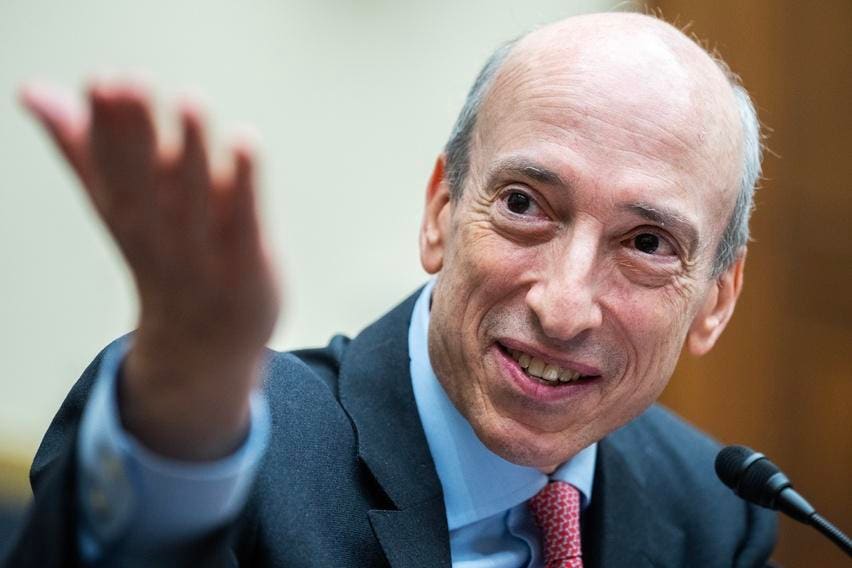
The U.S. Securities and Exchange Commission released its first Diversity, Equity, Inclusion, and Accessibility Strategic Plan in September. The brief plan, that encompasses the 2023 – 2026 fiscal years, is focused primarily on internal policies, but includes two goals that promote using the regulatory authority of the Commission to promote inclusion of underrepresented groups. This could signal new regulations relating to diversity, equity, and inclusion in the financial sector.
DEI generally refers to the internal policies of a company or government entity relating to ethnicity, gender, and sexual preferences of the employees. To the left, it is about reducing discrimination and promoting underrepresented voices within the entity, giving them an opportunity to grow. To the right, it is about pushing a political ideology that is inconsistent with their core values and discriminatory towards demographics who are not considered underrepresented.
The rise of DEI is directly correlated with the global rise of environmental, social, and governance. ESG is a type of investing where non-financial factors are considered in the decision-making process. ESG is primarily focused on environmental policy and the Paris’ Accords goal of net-zero by 2050. However, the social category has brought the most controversy, mostly in the United States, as some fund managers and businesses have included DEI policies within that category.
DEI has been a focus of the Biden Administration, including an executive order issued in June 2021 directing federal agencies to create DEIA plans and establish Chief Diversity Officers. It is focused exclusively on the makeup of the internal workforce of the Federal government.
The EO stated “The initiative will advance opportunity for communities that have historically faced employment discrimination and professional barriers, including: people of color; women; first-generation professionals and immigrants; individuals with disabilities; LGBTQ+ individuals; Americans who live in rural areas; older Americans who face age discrimination when seeking employment; parents and caregivers who face employment barriers; people of faith who require religious accommodations at work; individuals who were formerly incarcerated; and veterans and military spouses.”
The SEC’s DEIA plan is a direct result of that order. The overall plan is divided into three primary goals – People: Build our future through our people; Culture: Foster a culture of inclusivity, connectedness, and belonging; Mission: Leverage DEIA for mission effectiveness. Each goal is subdivided into priorities and actions relating to each of the elements of diversity, equity, inclusion, and accessibility.
While the majority of the priorities and actions are related to the handing of hiring and personnel matters within the agency, there are two notable actions that are outward facing under the Mission goal.
Equity: “Develop processes to ensure that the analysis for all regulatory matters includes consideration of underrecognized groups and analysis of potential unintended consequences of proposed regulatory action.”
Inclusion: “Educate and promote the benefits and importance of DEIA efforts with regulated entities in the financial services industry as well as sharing of best practices through the Diversity Assessment Report process and external outreach and engagement.”
If there is a question as to intent, in the introductory letter, SEC Chair Gary Gensler states “In promoting fairness and efficiency, it is important that access to our more than $100 trillion capital markets is inclusive.”
This indicates that the SEC is intending on utilizing its regulatory authority to push the financial markets towards the implementation of DEI policies. The exact method is yet to be seen.
The SEC is anticipated to release ESG reporting standards for publicly traded entities by the end of 2023. However, all indicators are that the new ESG rule is primarily focused on greenhouse gas emissions and other environmental policies. The SEC announced a new rule for ESG investment funds that regulates how they are marketed, but that is also focused on environmental issues, specifically greenwashing.
The most likely pathway is a new rule making the Diversity Assessment Report, created as a voluntary assessment in 2018, a mandatory part of the ESG report. Once reporting becomes mandatory, they can attempt to enforce regulatory requirements in the DEI metrics. California attempted a similar regulation in 2018, by requiring board composition to include at least one woman, and at least one minority or LGBTQ director. That law was held to be unconstitutional by a Federal court earlier this year.
The pathway to new regulation is often found in the tea leaves of internal policy statements. While purely speculative, it appears the SEC is moving towards a regulatory scheme relating to DEI.
This post was originally published on this site be sure to check out more of their content.








